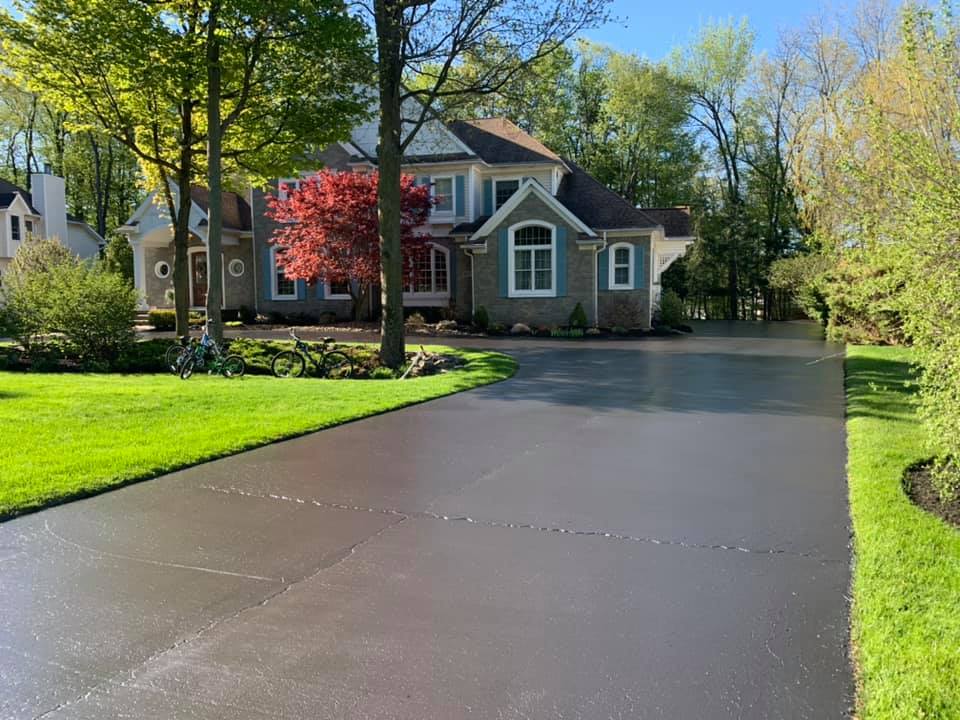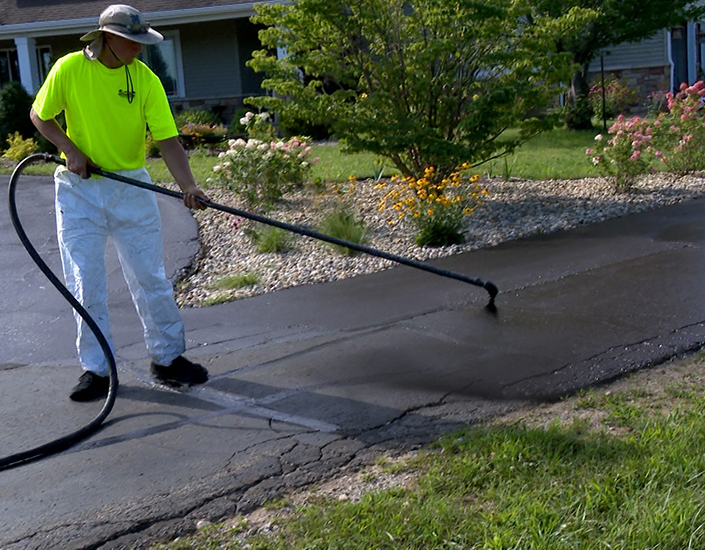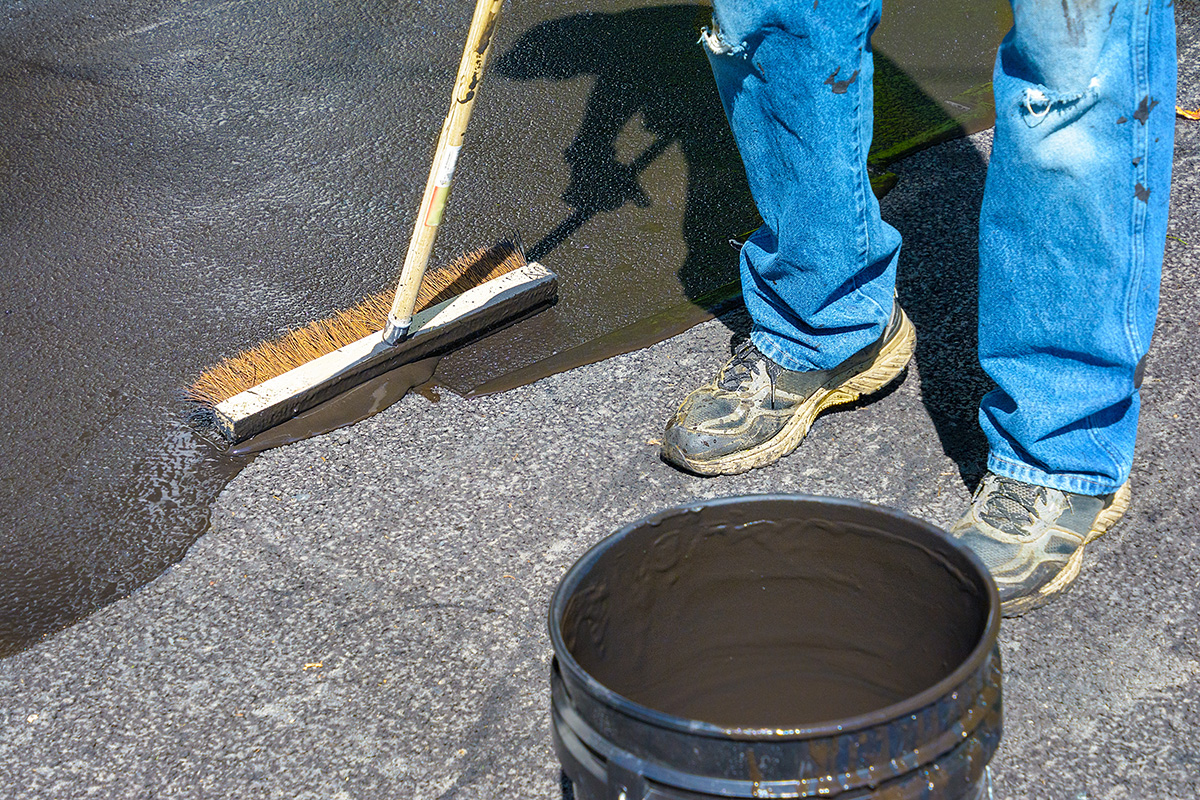Change Your Property's Aesthetic appeals: Commercial Parking Area Paving and Asphalt Sealing Solutions
Change Your Property's Aesthetic appeals: Commercial Parking Area Paving and Asphalt Sealing Solutions
Blog Article
Warm Mix Asphalt: A Sustainable Solution for Pavement
Warm Mix Asphalt (HMA) has emerged as a leading lasting option for pavement services, providing a myriad of cutting-edge innovations and ecological benefits. Its capability to minimize and recycle products power consumption offers an engaging case for its fostering in roadway building and construction tasks. The lasting efficiency and longevity of HMA make it a favored alternative for facilities development. As the demand for eco-friendly construction methods grows, checking out the subtleties of HMA's sustainability can offer valuable understandings into the future of pavement remedies.
Ecological Benefits of Warm Mix Asphalt

Furthermore, Hot Mix Asphalt helps to minimize urban warmth island effects. Its dark shade soaks up sunlight, minimizing the quantity of warm reflected back right into the atmosphere contrasted to lighter-colored sidewalks. This can lower ambient temperature levels in city areas, decreasing the demand for cooling and ultimately minimizing energy usage.
Furthermore, Warm Mix Asphalt adds to boosted stormwater management. Its permeable nature enables water to recharge and infiltrate the sidewalk groundwater materials, lowering overflow and the danger of flooding. These environmental benefits make Hot Mix Asphalt a sustainable option for leading freeways and roads.
Energy Efficiency in HMA Production
Is power efficiency a crucial element in the production of Hot Mix Asphalt (HMA)? Power plays a considerable function in the production of HMA, affecting both cost and ecological sustainability. One vital aspect of power performance in HMA manufacturing is the use of warm mix asphalt (WMA) technologies.
In addition, advancements in plant technologies have led to even more energy-efficient HMA manufacturing processes. By maximizing power usage in HMA production, the industry can lower its carbon footprint while maintaining premium pavement materials.
Recyclability of Hot Mix Asphalt
The recyclability of Hot Mix Asphalt (HMA) is an essential aspect of its sustainability and long-lasting environmental effect. HMA is among one of the most recycled products in the United States, with over 100 million heaps of redeemed asphalt pavement (RAP) being recycled every year in new pavement building and construction. Recycling HMA provides a number of ecological benefits, such as decreasing the demand for virgin materials, lowering energy usage during manufacturing, and lowering the quantity of waste sent out to landfills.
The process of reusing HMA involves milling the existing pavement, crushing it right into smaller sized items, and blending it with new accumulation and asphalt binder to create a recycled mix. In general, the recyclability of HMA plays a considerable duty in advertising lasting methods within the pavement market.

Long-Term Efficiency of HMA
Asphalt pavements show longevity and strength over an extensive duration, mirroring the lasting efficiency of Warm Mix Asphalt (HMA) In addition, advancements in HMA technology, such as the use of polymer-modified binders and cozy mix asphalt, have actually better improved i loved this the durability and durability of HMA sidewalks. By prioritizing top quality construction and maintenance practices, HMA proceeds to show itself as a cost-efficient and sustainable solution for lasting sidewalk framework.

HMA: Sturdiness and Sustainability
Demonstrating both longevity and sustainability, Hot Mix Asphalt (HMA) has actually come to be a cornerstone in the building and construction of lasting sidewalk frameworks - hot mix asphalt. HMA's sturdiness comes from its ability to stand up to hefty tons, harsh climate condition, and high website traffic volumes, making it a reliable choice for roads, freeways, and airport terminal paths. The make-up of HMA, which generally includes accumulations, binder, and filler, plays an important role in boosting its longevity and resistance to use and tear
Additionally, HMA's sustainability hinges on its recyclability and energy-efficient production procedure. The capability to recycle recovered asphalt sidewalk (RAP) in new HMA blends reduces the need for virgin products and minimizes the ecological effect of pavement construction and upkeep. Additionally, the energy effectiveness of creating HMA depends on its reduced blending temperature levels compared to various other sidewalk materials, causing lowered power intake and greenhouse gas exhausts.
Final Thought
In verdict, warm mix asphalt (HMA) uses a lasting solution for pavement with its eco friendly qualities. HMA's recyclability, power efficiency in manufacturing, and long-term sturdiness make it an environmentally friendly option their website for roadway construction.
HMA is one of the most recycled materials in the United States, with over 100 million loads of redeemed asphalt pavement (RAP) being recycled annually in brand-new sidewalk building and construction.The procedure of recycling HMA includes grating the existing sidewalk, squashing it into smaller items, and mixing it with brand-new aggregate and asphalt binder to develop a recycled mix.Asphalt pavements demonstrate longevity have a peek at this site and resilience over an extensive period, showing the lasting performance of Warm Mix Asphalt (HMA) Additionally, developments in HMA technology, such as the usage of polymer-modified binders and cozy mix asphalt, have better improved the longevity and longevity of HMA pavements. The capability to recycle redeemed asphalt pavement (RAP) in brand-new HMA blends decreases the demand for virgin materials and lessens the environmental effect of sidewalk construction and upkeep.
Report this page